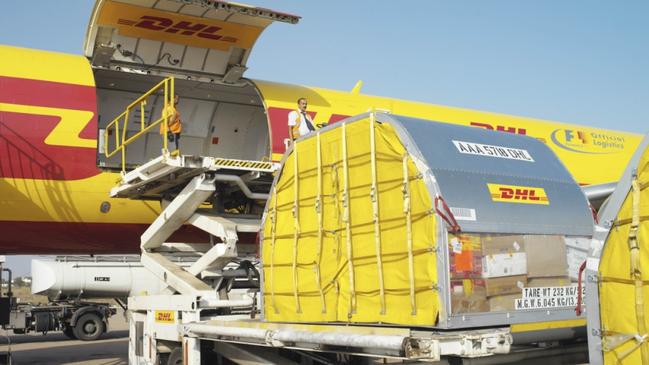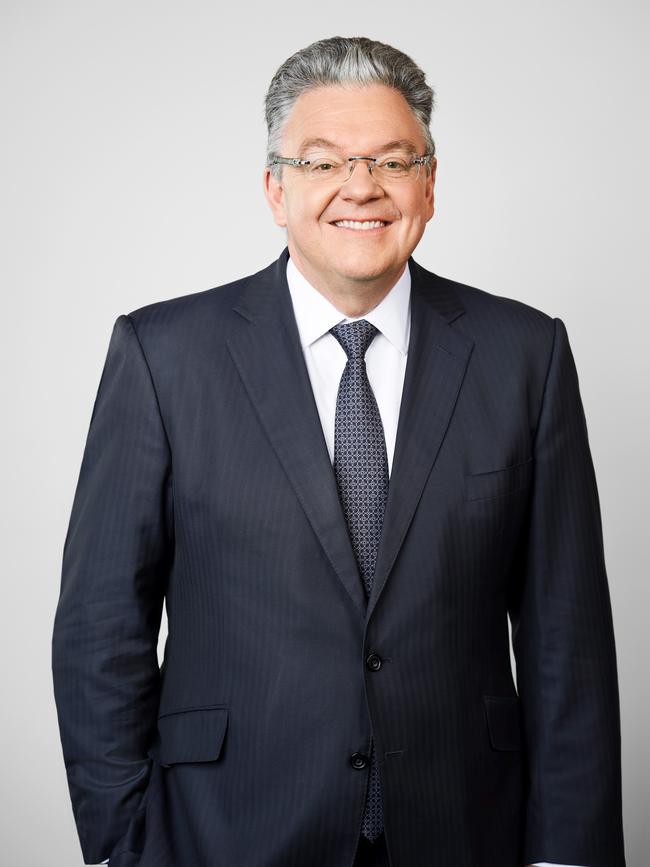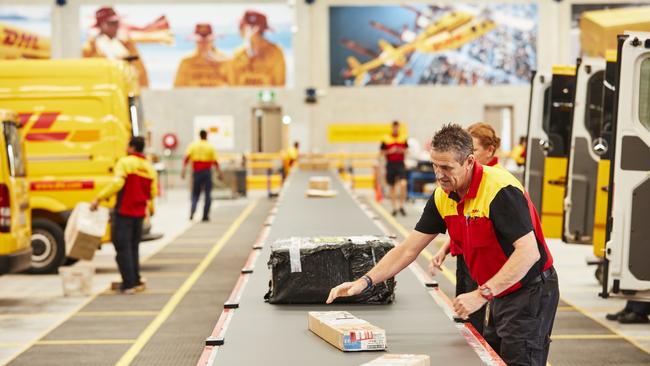DHL Express turns to household waste and algae for aircraft fuel
DHL Express says it will charge customers less than 1 per cent of the total cost of sending parcels on planes using sustainable fuel under its new ‘Go Green Plus’ product.

German-owned logistics titan DHL is leading a push towards carbon “insetting” – or adopting more environmentally friendly technology and fuels to slash emissions – rather than looking to offset its pollution via planting trees or buying so-called green credits.
The company’s Australian arm is using sustainable aviation fuel, which is made from household and industrial waste, certain oilseed crops or algae, to power a portion of its airline fleet in an effort to cut greenhouse emissions by 80 per cent.
Despite the hype around the product and its promise of combating climate change, sustainable aviation fuel accounts for about 0.01 per cent of the global jet fuel market, while air travel contributes about 2.5 per cent to the world’s total greenhouse pollution.
Companies including Qantas have attempted to solve this problem by offering customers a “fly carbon neutral” option via offsets, or tapping into the carbon credit market, stating that it will “remain a key lever in aviation’s global transition to a low carbon economy”.
DHL’s rival, Australia Post, has signed up to Qantas’ program to make every parcel sent in its network carbon neutral.
But sustainable aviation fuel (SAF) has now become the dominant tool in lowering pollution, with Qantas saying its “central to achieving our interim targets and net zero by 2050 goal”. In late 2021, Qantas became the first Australian airline to buy SAF on an ongoing basis and will spend $200m in a partnership with Airbus to develop a local industry for the greener fuel.
“We have committed to 10 per cent of SAF in fuel mix by 2030 and 60 per cent by 2050. We are using 10 million litres of SAF on flights out of London and will be using out of the US in 2025,” a Qantas spokesman said.

DHL Express chief executive John Pearson said battery technology could not power long-distance commercial flights, which cause most air transport emissions. Meanwhile, hydrogen power was not mature enough to replace jet engines in larger aircraft.
DHL will charge its customers less than 1 per cent of the total cost of a particular shipment to fund the use of SAF under its new “GoGreen Plus product”.
For example, sending a 500g parcel from Sydney to Los Angeles on an aircraft using SAF would cost 59c of the total $140 delivery cost. While a 1kg parcel on the same route would cost $1.18 of the $173 total delivery cost.
“This is the most effective way to help our customers make their own supply chains more sustainable,” Mr Pearson said.
“We know our customers are committed to reducing their environmental impact so it’s important we’re giving them the means to do so.

“I’m delighted that our investment in SAF can now be fully leveraged by customers to enable them to bring down the emissions of their shipments.
“Insetting through GoGreen Plus allows customers to bring down their Scope 3 emissions, the indirect greenhouse gas emissions that occur in a company’s value chain, including downstream transportation and distribution.”
Unlike insetting measures, the use of carbon credits and offsets has come under criticism; their use has attracted more scrutiny under redesigned safeguard mechanisms after the federal government struck a new agreement with the Greens.
Under the changes, projects which use carbon offsets to meet more than 30 per cent of their targeted requirements will be referred to the Clean Energy Authority to explain why.
The GoGreen Plus service is part of Deutsche Post DHL Group’s goal of achieving net-zero emissions by 2050. It contributes to the interim target of using 30 per cent SAF for all air transport by 2030.
The use of sustainable aviation fuel comes as DHL has launched an upgraded overnight direct freighter service connecting Melbourne to Auckland in New Zealand.
The Boeing 767-300 aircraft, operated by Tasman Cargo Airlines, replaces the previous Boeing-737 aircraft amid growing demand for time-definite international services.
Exports on the Melbourne-to-Auckland route have surged 48 per cent in the past three years.
DHL Express Australia and Papua New Guinea managing director Phil Corcoran said the new aircraft would lift service reliability.
“Furthermore, due to its ability to fly at a higher altitude and speed, the aircraft travels with greater fuel efficiency,” he said.
“This provides Australian and New Zealand businesses with a faster and reliable delivery route, as they benefit from a shipment transit time of just one day in metropolitan areas.”






To join the conversation, please log in. Don't have an account? Register
Join the conversation, you are commenting as Logout